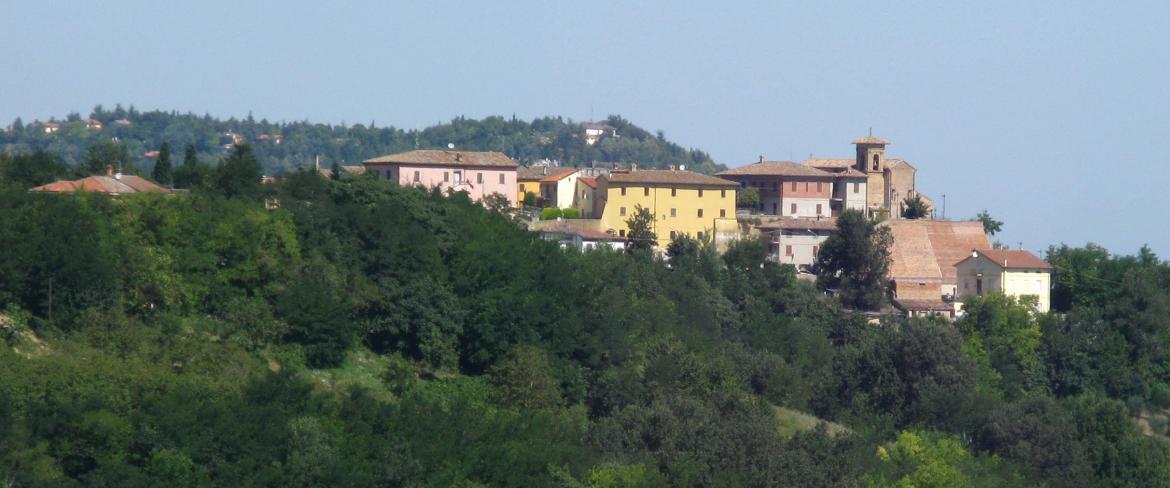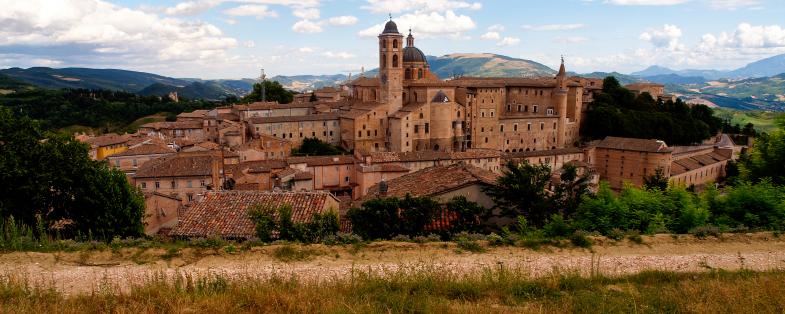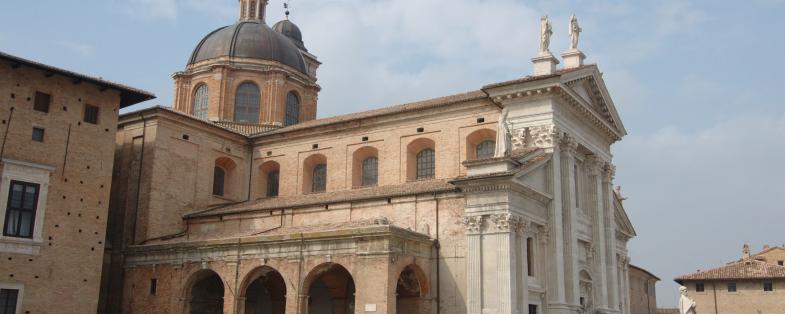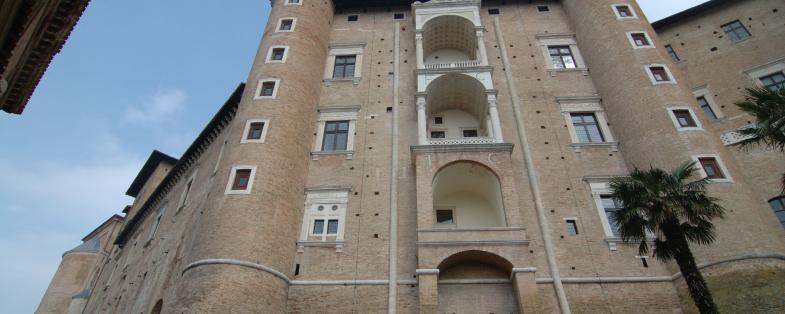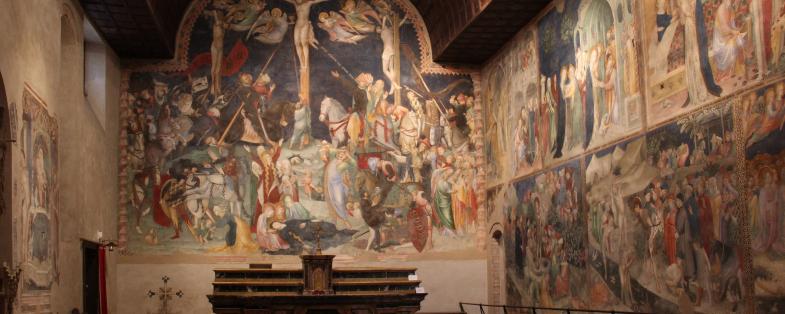Urbino is the birthplace of the Renaissance. The birthplace of Raphael, it rightly entered the UNESCO list in 1998. It was a model of cultural development in Europe during the Renaissance period when it reached a very high cultural level, becoming a destination for artists and scholars from all over Italy and beyond. Among its streets walked the painters Piero Della Francesca and Paolo Uccello, the writers Baldassare Castiglione, Torquato Tasso and Giovanni Pascoli and the great Leonardo da Vinci.
Discover the treasures and trivia of a city famous all over the world, not even 10 minutes from Petriano.
URBINO ITINERARY
Just before entering the village, you will pass near the Monastery of Santa Chiara, an architectural wonder and the setting of the film "La Mandragola" with Totò. Before strolling through the historic centre, enjoy the views offered by the landscape of the Marche hills, which have been a source of inspiration for many painters.
You enter Urbino passing under the majestic Porta Valbona dating back to 1621. Along Via Mazzini, you will find the San Giovanni stairways on the left with a particular shape to allow easy descent to the horses that once passed through these streets. A narrow road will lead you to the oratory of the same name, where you can admire the magnificent frescoes of the brothers Lorenzo and Jacopo Salimbeni. Continuing on, we reach the heart of Urbino, Piazza della Repubblica, a meeting place for the inhabitants surrounded by splendid architectural buildings. Corso Garibaldi will then take you to the famous Palazzo Ducale, the main attraction of the city and considered one of the greatest works of the Italian Renaissance. The route continues through Piazza Rinascimento with its famous obelisk and the Duomo. From here, return to Piazza della Repubblica to visit the Church of San Francesco and then continue towards the house of Raphael.
The itinerary ends in beauty with the Parco della Resistenza, which offers a fascinating panorama of Urbino.
CURIOSITIES
Urbino is full of secrets. Few people know that the square of Palazzo Ducale acts as an amplifier, so the Duke could be heard by all the people. Even the façade of the building hides a curios fact: if you talk to the side columns with a friend you can hear each other as if you're just steps away. This trick was used in the past by guards to communicate.
Built on a hill, the streets of Urbino are steep and also slippery in winter. As such, it is not uncommon to find characteristic wrought iron handrails on the sides of the alleys.
Urbino is a city of a thousand surprises and if you happen to visit in the first week of September, hundreds of kites will fill its skies for the Festa dell'Aquilone. It has a dreamlike atmosphere.

